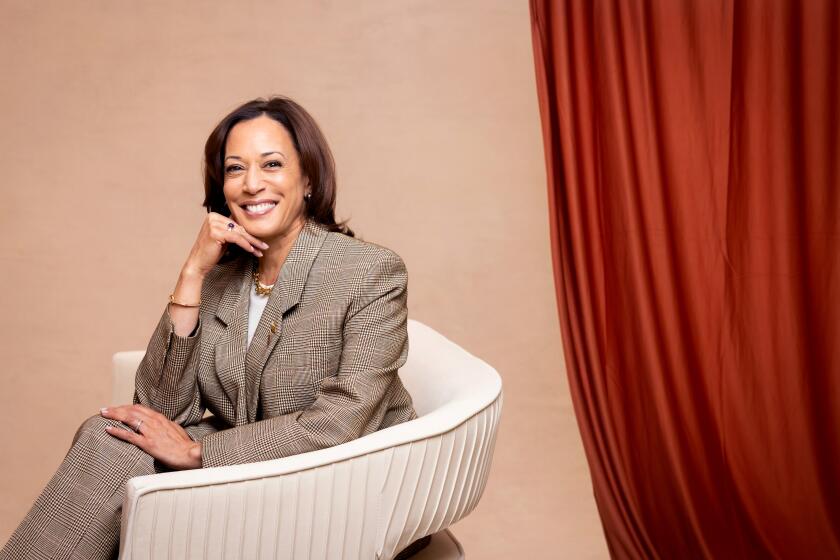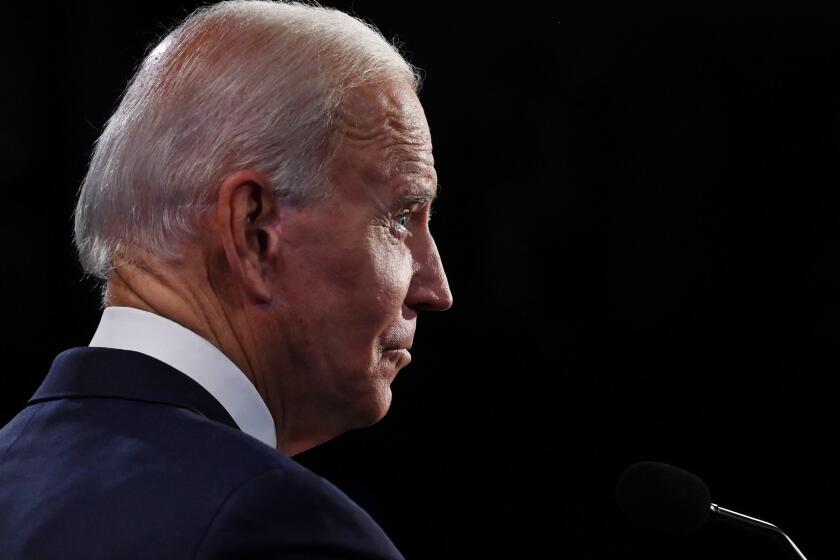Following Catholic Leaders’ Footsteps : ‘West Point of Seminaries’ Has 136-Year Tradition of Grooming Men for Key Roles in U.S. Church
Surrounded by crypts of popes and relics of saints, the young men file into the pews. Their black clothes reflect in the heavy varnish. Some tug at their clerical collars, worn for the first time.
“In a real way, New Men, this is the goal of your journey, the reason you are here,” Monsignor Timothy Dolan says from the pulpit.
His words echo sharply off the low ceiling in the underground chapel at St. Peter’s Basilica--a fitting location for a group of American seminarians on the first step of a path trod by the highest leaders of the Roman Catholic church.
The incoming group of students at the Pontifical North American College--or the “New Men” as they are often called--listen to their rector’s sermon, then pass before the tomb of St. Peter. Their elite education is under way.
The 41 first-year priesthood candidates took their places this fall in an institution sometimes described as the West Point of seminaries for its 136-year-old legacy of grooming church leaders. More than a fourth of the 383 American bishops and archbishops attended the seminary or its graduate program. Seven of the 12 American cardinals are alumni.
The New Men carry more than an impressive tradition. They reflect trends reshaping the dwindling ranks of the American priesthood.
Many are older seminarians who gave up careers and sometimes love affairs. Their calling blossomed at a time when the church had been shaken by sex scandals, seen antiabortion militants turn to violence in the name of their faith, and watched religion drift further from the mainstream of American life.
Many of the new seminarians believe the turmoil may be a bitter, but beneficial, tonic. They say problems in the priesthood can now be confronted more openly. And they are resolved to regain the church’s equilibrium and respect.
“It’s up to the clergy to bring the church back to the people and make it really mean something. It won’t happen on its own,” says Brian Christenson, 30, a former Air Force B-1 bomber pilot sponsored in the seminary by the diocese of Rapid City, S.D.
*
At the Rome seminary--as in many others in the United States--discussions are held on celibacy and the isolation and emotional troubles that sometimes face the clergy. A full-time psychologist is available for confidential sessions and counseling in such things as sexual abuse is required.
“I think that the last few years, we’ve been through a period of refinement by fire,” says Dolan, a St. Louis native who took over as rector last year.
That is reflected in the dwindling numbers of men in this country turning toward the priesthood. The number of post-degree American seminarians has fallen from 8,235 in 1966 to 3,328 last year, according to a Georgetown University group, the Center for Applied Research of the Apostolate in Washington, D.C.
But the decline, Dolan said, now “seems to have bottomed out. . . . The good news is that it doesn’t seem to be dramatically decreasing. The bad news is that the increase is hardly noticeable yet.”
Theories on the decline in the priesthood are as plentiful as “amens” at the seminary. The obvious culprits--materialism, rejection of faith--are often cited. But Dolan lays some of the blame on the clergy itself for being timid recruiters.
“Is it because we are embarrassed about the scandals that are going on?” he asks. “Is it because we don’t want to imply that the priesthood is a more sacred or special way of life than, say, marriage . . . I don’t know what it is, but priests are a little hoarse in encouraging vocations.”
One group bucking the trend appears to be Vietnamese Americans, many of whom adopted Catholicism during French rule. Since the late 1980s, the Vietnamese community has seen a sharp increase in the number of men seeking the priesthood.
“Among Vietnamese, being a priest is highly respected,” says Tam Xuan Tran, who arrived in Washington, D.C., in 1990 and worked as a busboy and convenience store clerk before entering a college seminary in Scranton, Pa. “We don’t see it as giving up something. We see it as gaining something.”
The journey to ordination, however, does not come without a price. Home dioceses and archdioceses underwrite the program at North American College, which lasts four or five years and costs up to $15,000 a year. This year, some large archdioceses, such as Boston and Philadelphia, decided not to send a student and to use the money instead to support their own seminaries.
But many American bishops know the value of sending a student to Rome, where he becomes steeped in the ways of the Vatican and linked to the chummy network of Catholic leaders.
Dolan bristles at the idea that he is running a bishop factory.
“In the past it’s been said that we are the West Point of the American Catholic Church. We have to be careful about that. . . . That has generated sometimes an elitism and maybe sometimes a haughtiness that did not serve us well and is certainly contrary to the Gospel,” Dolan said.
“I say, ‘Fellas, if you’re not happy with the idea of spending the rest of your lives as parish priests you should probably go elsewhere.’ ”
More to Read
Sign up for Essential California
The most important California stories and recommendations in your inbox every morning.
You may occasionally receive promotional content from the Los Angeles Times.






